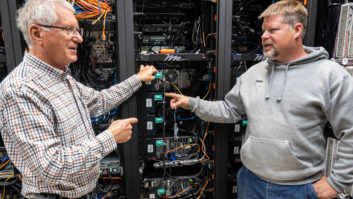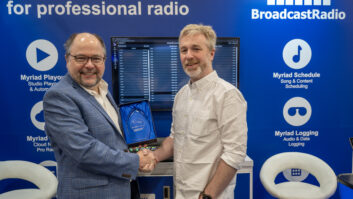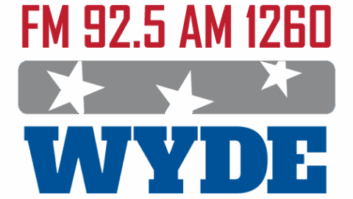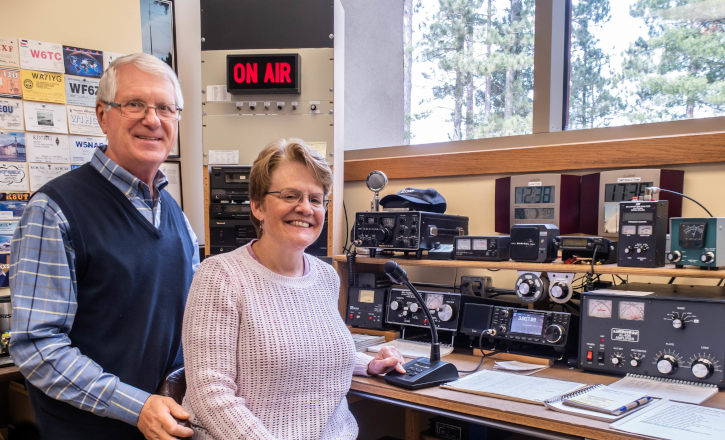
Starting in the 1920s and through the ’60s, almost every broadcast engineer was a licensed amateur radio operator. That has changed a bit, but the importance of being a ham has not.
Both environments involve getting an RF signal from Point A to Point B. But it is interesting to note that radio broadcast and amateur radio are similar and yet so different.
For those who don’t know much about ham radio, I’ll tell you that communicating locally or internationally, via licensed amateur radio, can be a fascinating and challenging hobby. There are about 700,000 hams in the U.S. and an equal number worldwide.
Physics
Broadcast and amateur radio operate under the same laws of science. Transmitters, transmission lines, antennas and receivers make up an RF path to convey a message.
Broadcast engineers know that signal propagation on AM and FM bands is dramatically different. It is because our FM band is roughly 100 times the frequency and 1/100th the RF wavelength of that on the AM band. Engineers also know that 950 MHz STL signals are line-of-sight and roughly a 10-times jump in frequency from FM broadcast frequencies. Each band has its own challenges in getting a useable signal through.
[Read: Mark Persons: “I Never Had a Plan B”]
Amateur radio operators have about 30 bands of frequencies, with opportunities to explore from below the AM broadcast band up through GHz and to light. Hams are not limited to amplitude or frequency modulation, but often use single sideband and many modes of digital. A few communicate via teletype and/or transmit television images to friends.
Yes, some hams still use Morse Code to send and receive messages in their hobby. Code proficiency is no longer required for getting an amateur radio license, but it is a fun personal challenge to many.
Similarities
What I find valuable is applying what I know about amateur radio in my work as a broadcast engineer.
And, of course, it works both ways. Forward power, reflected power, transmission line loss, antenna gain, transmitter power amplifier efficiency and path loss are all dictated by the same rules. The mysteries and science of RF propagation to a new broadcast engineer are facts of life for radio amateurs.
Hams deal with the wave propagation challenge every day. Communicating across the world via radio waves may be lost on the internet/millennial generation, but it can be a real challenge for those who want more out of life.
International contacts are common during peaks in the 11-year solar cycle. With 400 watts I was able to make contact with a station in Antarctica from home using a good antenna. I made contacts to Europe, Japan, Russia and even Australia with just 100 watts from my car, mostly on 20 meters (about 14 MHz). Talk about distracted driving! Australia is halfway around the world from Minnesota. The RF path between us was only open for a half hour. It is always a thrill to be on the right frequency at the right time.
As with broadcast, profanity is not allowed on amateur radio. Don’t confuse amateur radio with Citizens Band. CB is a sad story about people transmitting on the 27 MHz band using bad language and unacceptable social conduct. Hams can lose their licenses for that.
Differences
Broadcasters are licensed for specific frequencies at specific power levels.
Hams might run up to 1500 watts of RF peak power in most bands of frequencies. Good operating practice is to transmit with only the amount of power necessary to reach the other end. Some delight in the challenge of contacting amateur stations worldwide with a watt or less of power.
Broadcasters modulate AM, FM and/or digital as per their license. FCC rules mandate tightly controlled occupied bandwidths. Hams select one of many modulation types, although the bands are divided into segments for each modulation type, just to keep order.
Broadcast transmitters are required to maintain a tight frequency tolerance. Hams can wander up and down authorized frequency bands looking for a clear spot to call CQ (calling anyone listening who might want to talk.) They can and do easily converse with hams in foreign countries. That is far more fun and challenging than just listening.
Hams don’t “broadcast” to a city or the world. They don’t play music or run program as you will find on the AM and FM broadcast bands. Instead, amateurs communicate with other hams one on one by voice, digital or Morse Code.
Sometimes hams participate in “nets” where groups meet on frequency to share ideas. The net control operator turns the frequency over to one at a time for the rest of the group to hear.
In broadcasting, almost anyone can buy a station, a construction permit or a license. It just takes money. Amateur radio is different. For a fee of about $35, a person can write an exam to prove his or her knowledge of electronics and FCC rules. With a passing grade, the FCC will issue a license to that person, good for 10 years with a cost of only $35 to renew. Try that in broadcasting!
Amateur radio currently has three levels of licensing: Technician, General and Extra. Climbing that ladder with examinations gets hams more privileges and operating frequencies. Many thousands have done it and so can you, especially now that proficiency with Morse Code is no longer required.
Call Signs
Amateur radio operators and broadcasters are issued call signs by the FCC.
Each call is unique and recognized worldwide. There is only one WGN in Chicago, only one W0HA for my wife Paula and only one W0MH for me. The (0) is zero, not O.
Call signs in other parts of our country use numbers 1 through 9 separating the prefix from the suffix. They start with a G in England, XE in Mexico — the list goes to more than 300 countries.
Because there are so many hams nowadays, new call signs in the United States look something like KF2XYZ. To be clear, broadcast stations have call signs, but broadcast owners do not. An amateur call sign is assigned to an individual person.
Hams use their call signs to identify every 10 minutes and at the end of a conversation. Broadcast stations, as you know, are required to ID once an hour. A broadcast ID has a call sign and city. Hams only use their call sign. They might be mobile, on the water or even airborne.
SBE
The Society of Broadcast Engineers has a “Chapter of the Air” meeting on amateur radio the second Sunday of each month on 14.205 MHz single sideband. Net control is Hal Hostetler, WA7BGX in Tucson, Ariz. It starts at 2400 GMT. That is 6 p.m. Central Time in Minnesota during the winter and 7 p.m. in the summer. Hams check in and tell what has been happening in their lives, such as attending an NAB convention or SBE meeting. This group has participants from coast to coast.
Morse Code
While walking into the engineering room of a station, I heard the Morse Code letter B (Dah-Dit-Dit-Dit.)
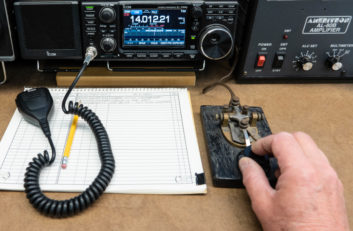
It didn’t take long to realize the sound was coming from a Best brand Ferrups uninterruptible power supply. The “B” was telling me that its battery needed replacing. The letter H is a high temperature alarm. Very clever of them. Knowing Morse Code also comes in handy on 450 MHz transmitter/studio links with Morse identifiers. For those who are Morse challenged, a phone call to a local ham could reveal the answer when the sound that is played over a phone.
Morse Code is another way of speaking English. It is not that difficult to learn. If I can copy code with a severe hearing loss, you can too. (I was a U.S. Army sergeant in Vietnam 1968–69.) My wife Paula passed a 20-word-per-minute code exam to get her Extra Class amateur license.
As mentioned, code is not required nowadays. Many hams find it a preferred mode of operation because it cuts through the noise so well. Many hams refer to Morse Code as the original digital communication mode.
The Ham Hobby
Some radio amateurs like to design and build equipment. Many like to work on antennas. Most like to chat with friends on the radio. Some chase DX (long distance contacts) to stations in foreign countries. They proudly stick a pin in a world map at each far-off location.
Astronauts are licensed amateur radio operators. It is a real thrill to talk to a ham aboard the International Space Station. That can be done with just a few watts of power on VHF or UHF. The old adage is true: If you can see it, you can talk to it.
Conclusion
Broadcast engineers who are licensed amateur operators have a better handle on the world of electronics. Having a ham license is one more way of showing their peers that they know something about RF. It is another feather in their cap.
For more information on amateur radio, go to the ARRL, the National Association for Amateur Radio at www.arrl.org.
And learn more in this video at youtube.com: “W1AW ARRL Station Tour.”
Mark Persons, WØMH, CPBE, retired after 44 years but continues to mentor broadcast engineers. For more articles and resources from the author visit http://mwpersons.com.
Comment on this or any article. Write to [email protected].

